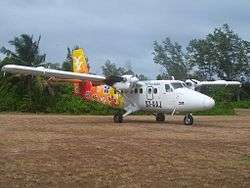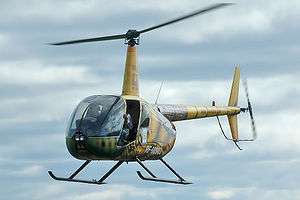Light aircraft



A light aircraft is an aircraft that has a maximum gross takeoff weight of 12,500 lb (5,670 kg) or less.[1]
Many light aircraft are used commercially for passenger and freight transport, sightseeing, photography, and other similar roles as well as personal use.
Examples of light aircraft include:
- Cessna, the entire range of propeller-driven aircraft from the Cessna 120 up through the Cessna 208
- Piper, all models
- Beechcraft, the models such as the Beechcraft Bonanza and the Beechcraft Baron that are not jet propelled.
- Others such as Cirrus Design's SR20 and SR22, the GippsAero GA8 Airvan, the Aviat Husky, the Robin DR400, and the civil aviation Grumman Aircraft.
Examples of aircraft that are at the maximum gross takeoff weight for this category include the de Havilland Canada DHC-6 Twin Otter and Beechcraft B200 Super King Air.[2][3]
Uses
The many uses of light aircraft include aerial surveying, such as monitoring pipelines.[4] They are also used for light cargo operations, such as "feeding" cargo hubs,[5] as well as some passenger operations. Light aircraft are also used for marketing purposes, such as banner towing and skywriting. Primary flight instruction is also conducted in light aircraft. Finally, most personal aircraft are light aircraft, the most popular being the Cessna 172. Larger light aircraft, such as twin turboprops and very light jets are often used as business aircraft.
See also
References
- ↑ Crane, Dale: Dictionary of Aeronautical Terms, third edition, page 308. Aviation Supplies & Academics, 1997. ISBN 1-56027-287-2
- ↑ Viking Air. "Twin Otter Series 400". Retrieved 2009-03-18.
- ↑ Jackson, Paul; Munson, Kenneth; Peacock, Lindsay. Jane's All the World's Aircraft. Jane's Information Group. ISBN 0-7106-2684-3.
- ↑ Collins, Mike. "Piper project honors pipeline patrols". Aircraft Owners and Pilots Association. Retrieved December 30, 2012.
- ↑ "Mountain Air Cargo". Retrieved December 30, 2012.